Explore our gallery



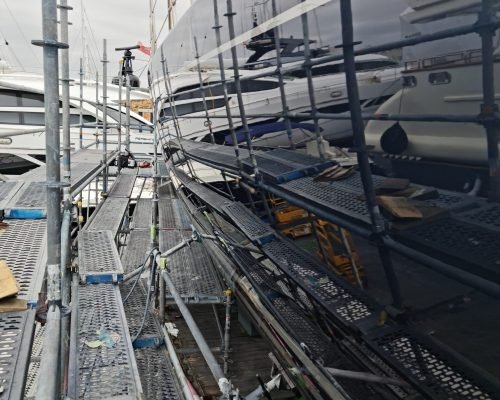
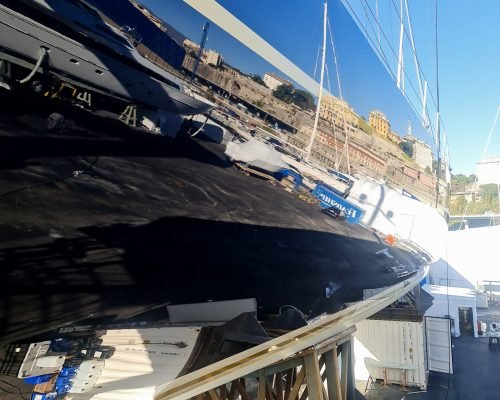
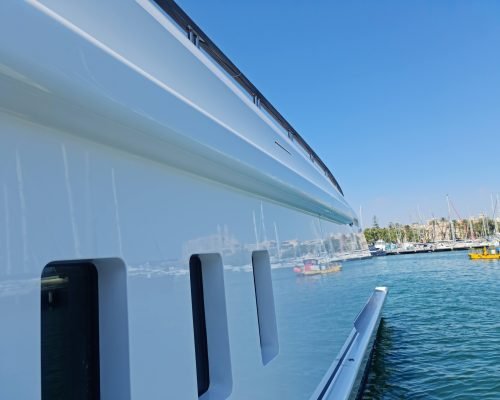
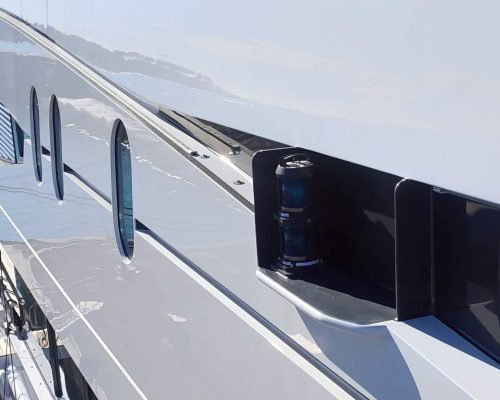
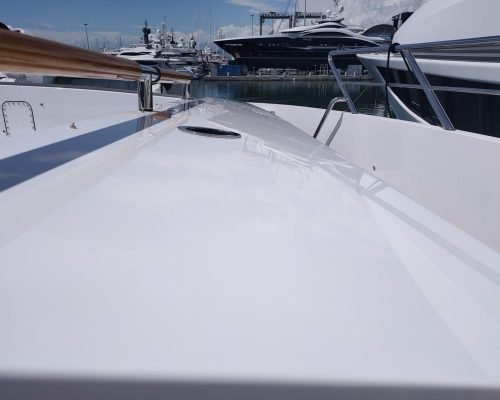
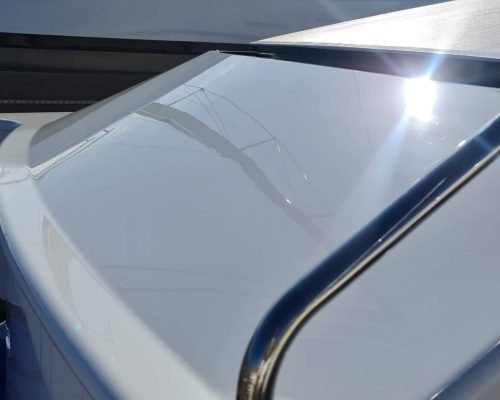

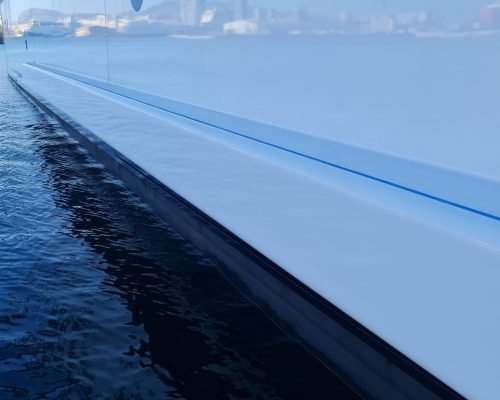
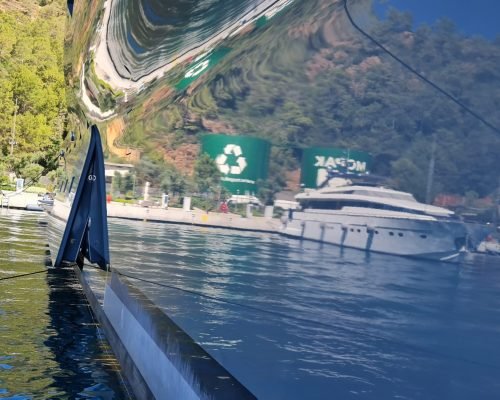
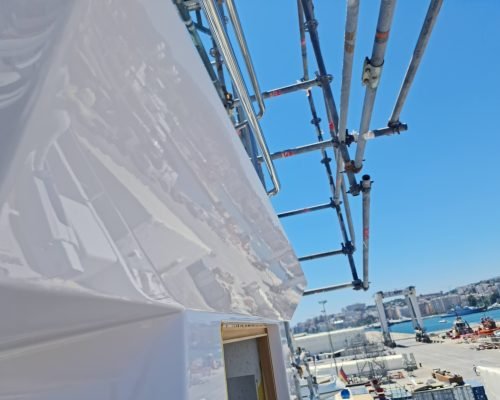
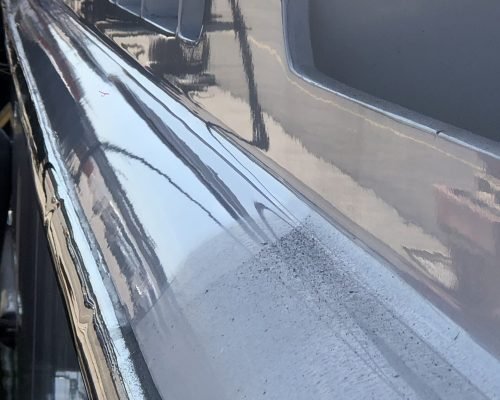
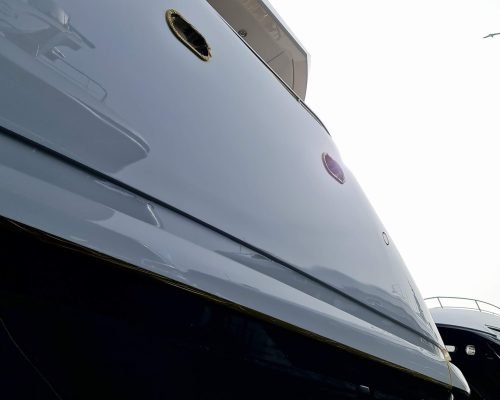

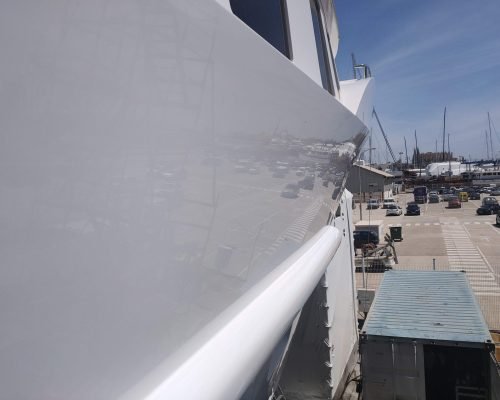

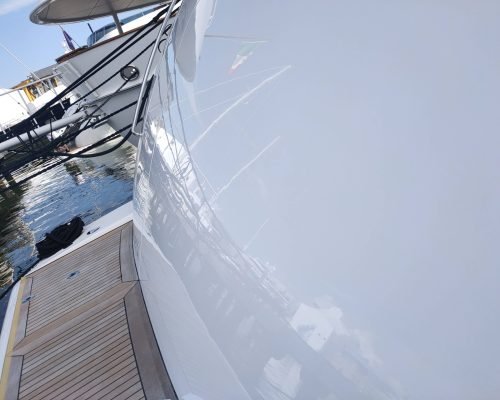


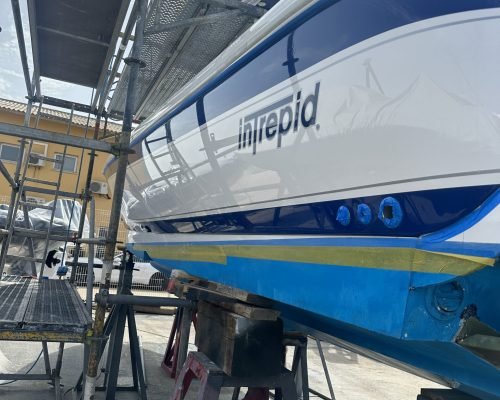
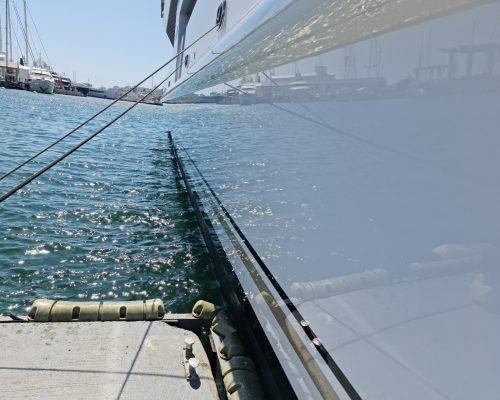
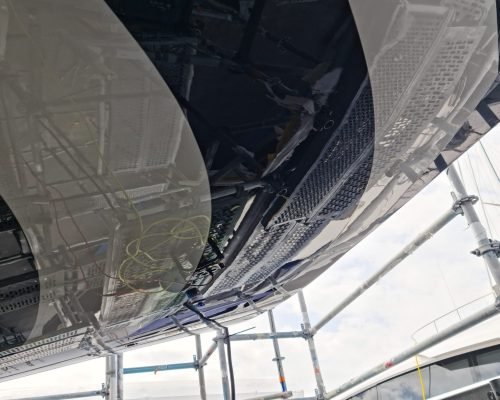
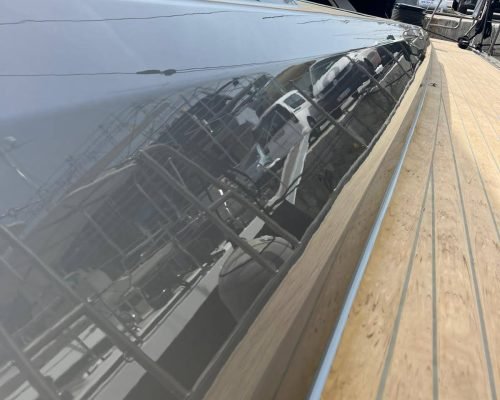
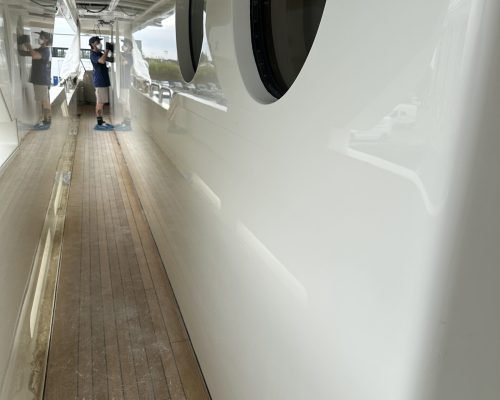
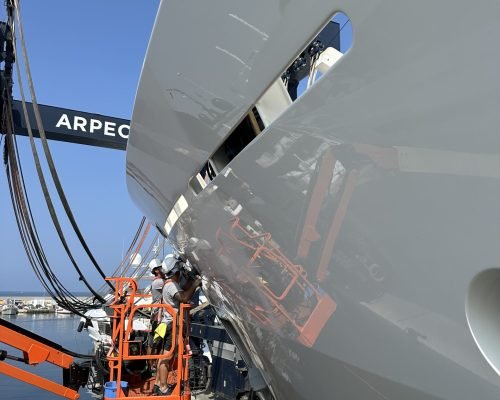
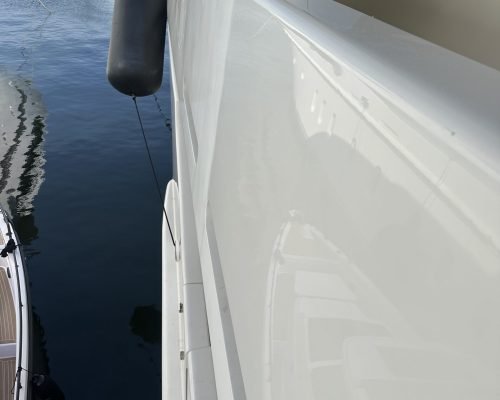
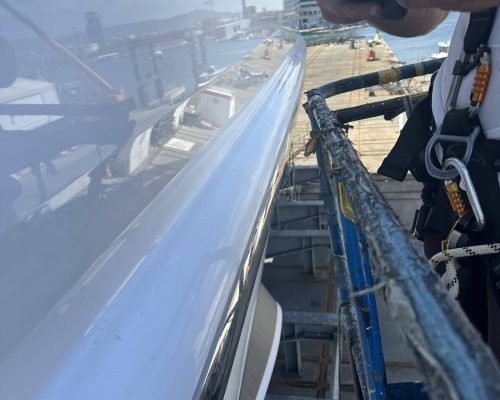



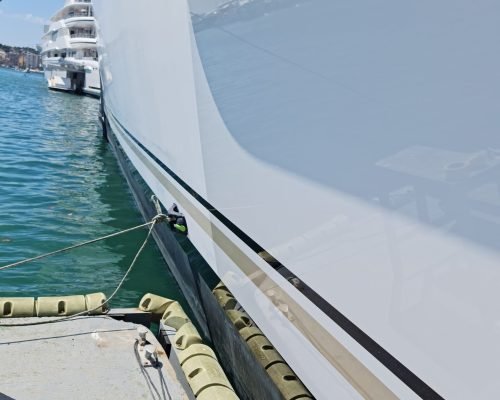
ABOUT CERAMIC COATING
Ceramic coating adheres to a surface through a process involving several well-coordinated steps.
Delve deeper into the process

1. SURFACE DECONTAMINATION & PREPARATION
The yacht undergoes an extensive cleaning process to remove all contaminants, including salt, grime, soot and marine growth. This is achieved through the use of specialized cleaning agents to ensure the surface is pristine. Any existing imperfections, such as scratches, oxidation, or swirl marks, are meticulously polished out. This step is crucial for creating a flawless surface that the ceramic coating can bond to effectively. Multiple stages of polishing may be required, using various compounds to achieve the desired level of clarity and smoothness.
Following the polishing stage, the surface is thoroughly wiped down with isopropyl alcohol/water solution. This removes any residual polishing oils and contaminants, ensuring the surface is perfectly clean and prepared for the coating application.
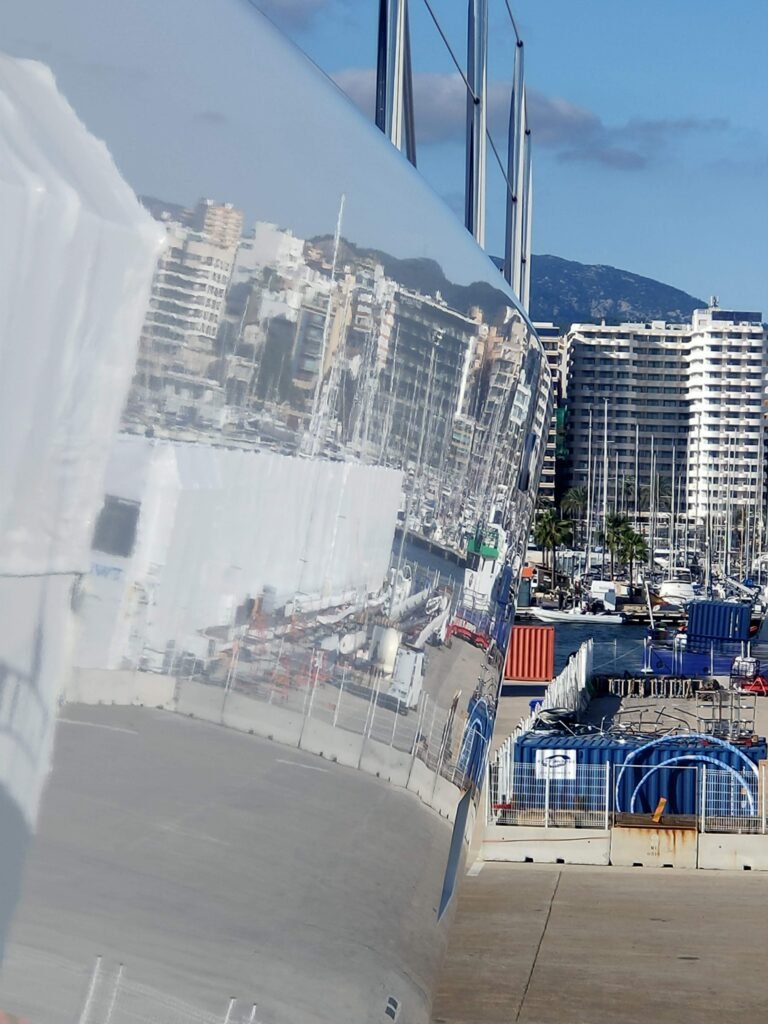
2. APPLICATION & CHEMICAL BONDING
Upon carefully studying the surface’s condition and discussed the options with the client, the ceramic coating is carefully applied using specific methods such as Roll & Tip or Wipe on-Wipe Off techniques. The coating is spread in thin, even layers across the surface, using a pattern to ensure uniform coverage. In the case of Wipe on-Wipe off method, the coating is leveled using a clean microfiber pad to remove any excess product and achieve a smooth, even finish. This step is critical to avoid high spots and streaks.
Ceramic coatings typically contain silicon dioxide (SiO₂) as the primary ingredient. When applied to the prepared surface, the coating forms a chemical bond with the paint at the molecular level. The active ingredients in the ceramic coating react with the surface to create a semi-permanent adhesion. This chemical reaction helps the coating to harden and form a protective layer.

3. PROTECTION & ENHANCEMENT
Once fully cured, the ceramic coating provides a hard, glossy, and hydrophobic (water-repellent) layer. It helps protect the surface from environmental contaminants, UV rays, oxidation, and minor scratches. The hydrophobic nature of the coating also makes it easier to clean and maintain.
